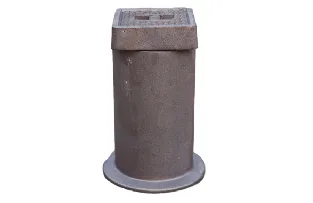Innovative Designs in Square Butterfly Valves for Enhanced Flow Control and Efficiency
Square Butterfly Valve An Overview
In the world of fluid control systems, the square butterfly valve plays a crucial role in various industrial applications. Combining the efficiency of traditional butterfly valves with a square design, this type of valve has gained prominence for its unique features and advantages.
Design and Structure
The square butterfly valve is characterized by its square-shaped disc, which is typically mounted on a shaft. This design enables the disc to rotate within the flow path, either allowing or restricting the flow of fluids — be it liquids or gases. Unlike conventional round butterfly valves, the square shape offers a larger surface area for flow control, potentially improving the valve's performance in certain applications.
Functionality
The primary function of any butterfly valve, including the square variant, is to regulate flow. When the disc is parallel to the flow, the valve is in the open position, allowing maximum flow. Conversely, when the disc rotates 90 degrees, it is in the closed position, effectively blocking the flow. This mechanism provides quick response times, making square butterfly valves ideal for applications where rapid flow control is necessary.
Advantages of Square Butterfly Valves
1. Space Efficiency The compact design of square butterfly valves allows them to be installed in tight spaces, making them suitable for various industrial setups. Their square shape can also facilitate alignment with square ductwork or piping systems.
2. Versatility These valves can handle a diverse range of fluids, including water, oil, and gases. They are commonly used in industries such as HVAC (Heating, Ventilation, and Air Conditioning), water treatment, and chemical processing.
square butterfly valve

3. Flow Control The square shape provides better flow characteristics in certain applications. The design minimizes turbulence, allowing for smoother flow patterns. This is particularly beneficial in systems that require precise flow management.
4. Durability Constructed from robust materials like stainless steel, cast iron, or plastic, square butterfly valves are designed to withstand high pressure and aggressive media. This durability enhances their lifespan, reducing the need for frequent replacements.
5. Cost-Effectiveness Compared to other valve types, square butterfly valves are often more affordable, making them an economical choice for businesses looking to optimize their systems without breaking the bank.
Applications
Square butterfly valves find their application in numerous fields. In the HVAC industry, they regulate air flow within duct systems, ensuring efficient climate control. In water treatment facilities, they manage the flow of treated water, contributing to effective waste management. Additionally, the chemical industry utilizes these valves for controlling the flow of various chemicals, ensuring safety and efficiency.
Maintenance and Considerations
While square butterfly valves are generally low-maintenance, regular inspections are essential to ensure they function optimally. Operators should check for wear and tear, especially on the sealing surfaces, as this can affect performance. Additionally, proper installation and alignment within the piping system are crucial for reducing stress on the valve and prolonging its life.
Conclusion
In summary, square butterfly valves represent a revolutionary advancement in fluid control technology. Their unique design offers numerous benefits, including improved flow control, space efficiency, and versatility across a range of industries. As technology advances and industries evolve, the square butterfly valve is likely to remain a vital component in the toolkit of engineers and technicians, ensuring efficient and reliable operations in a myriad of applications.
-
The Smarter Choice for Pedestrian AreasNewsJun.30,2025
-
The Gold Standard in Round Drain CoversNewsJun.30,2025
-
The Gold Standard in Manhole Cover SystemsNewsJun.30,2025
-
Superior Drainage Solutions with Premium Gully GratesNewsJun.30,2025
-
Superior Drainage Solutions for Global InfrastructureNewsJun.30,2025
-
Square Manhole Solutions for Modern InfrastructureNewsJun.30,2025
-
Premium Manhole Covers for Modern InfrastructureNewsJun.30,2025
